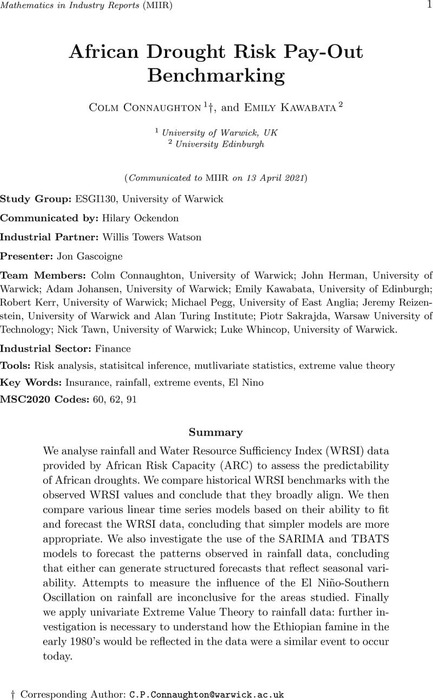Abstract
We analyse rainfall and Water Resource Sufficiency Index (WRSI) data provided by African Risk Capacity (ARC) to assess the predictability of African droughts. We compare historical WRSI benchmarks with the observed WRSI values and conclude that they broadly align. We then compare various linear time series models based on their ability to fit and forecast the WRSI data, concluding that simpler models are more appropriate. We also investigate the use of the SARIMA and TBATS models to forecast the patterns observed in rainfall data, concluding that either can generate structured forecasts that reflect seasonal variability. Attempts to measure the influence of the El Niño -Southern Oscillation on rainfall are inconclusive for the areas studied. Finally, we apply univariate Extreme Value Theory to rainfall data: further investigation is necessary to understand how the Ethiopian famine in the early 1980's would be reflected in the data if it reoccurs today.
Content




